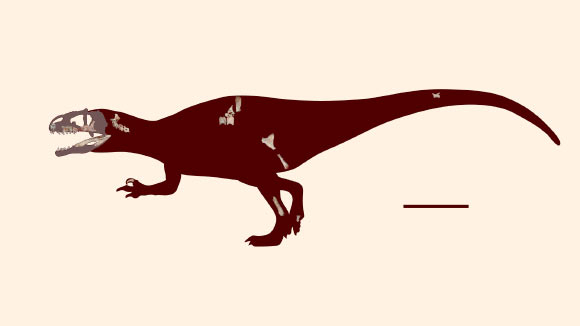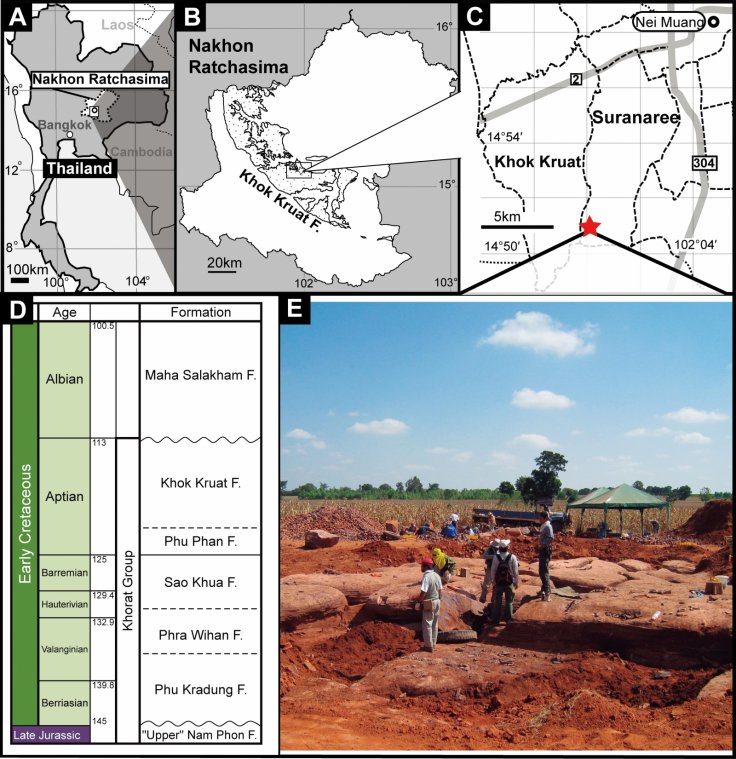
Researchers discovered a new species of predatory dinosaur in Thailand which had shark-like teeth. The newly discovered dinosaur, named Siamraptor suwati, used to live on earth approximately 120 million years ago during the Cretaceous period.
Steve Brusatte, a University of Edinburgh palaeontologist, told National Geographic that this is one of the most important Thai dinosaurs ever found. The researchers found that this ancient giant belonged to the family of Carcharodontosauria, which is the group of dinosaurs from the Jurassic and Cretaceous periods.
It should be mentioned that unlike Tyrannosaurus rex or T.rex who used their jaws to crush the rey's bones, this newly found dinosaur had shark-like teeth. The members of this family were known for their sharp teeth, which were very useful to tear the flesh cleanly from their preys' bones.
The palaeontologists found the fossilized remains of four Siamraptor suwati individuals. During the excavation, they discovered the skull, backbone, limbs, and hips from Khok Kruat Formation in Nakhon Ratchasima province, Thailand.
After the polygenetic analysis of the fossil remains, Dr Duangsuda Chokchaloemwong of Nakhon Ratchasima Rajabhat University and other colleagues from Japan and Thailand revealed that "Siamraptor suwati is a basal species of Carcharodontosauria, involving a new sight of the paleobiogeographical context of this group."
In addition, they also stated that this dinosaur species, "Siamraptor suwati is the best-preserved carcharodontosaurian theropod in Southeast Asia, and it sheds new light on the early evolutionary history of Carcharodontosauria."
As per Dr Duangsuda Chokchaloemwong since this is the first evidence of the oldest carcharodontosaurian dinosaur found in this Southeast Asian region, the discovery will help to make Thai people realize that the country has so many fossils, which is yet to discover.
The study paper, which included all the recent findings was published in the journal PLoS ONE.










